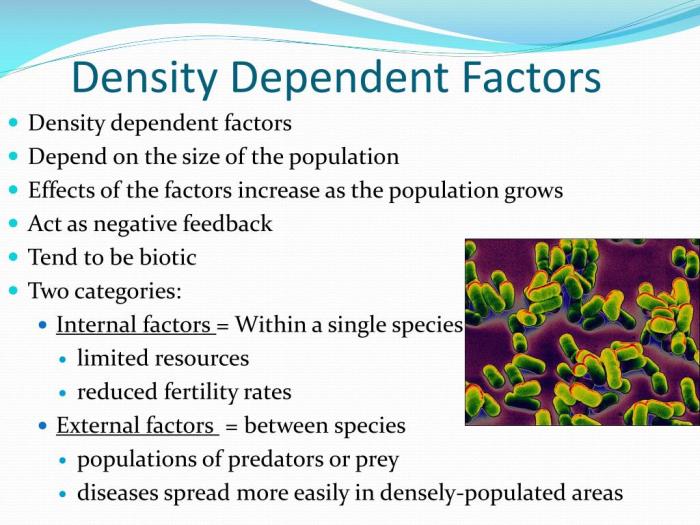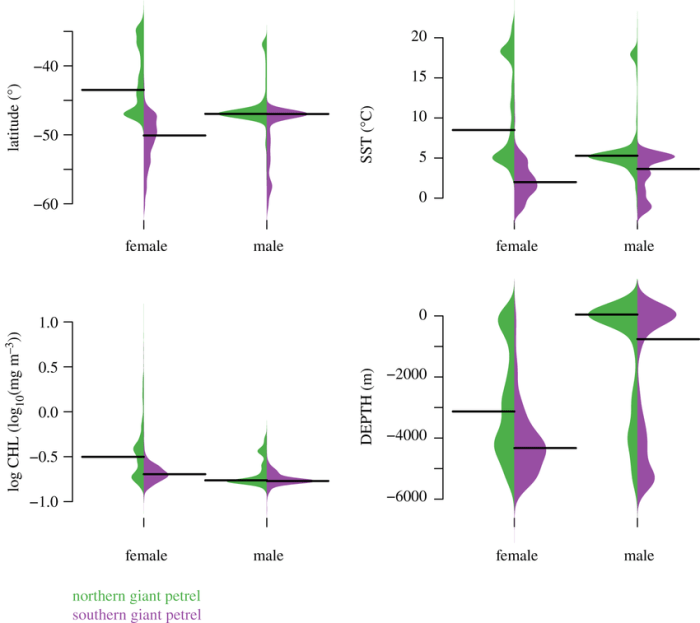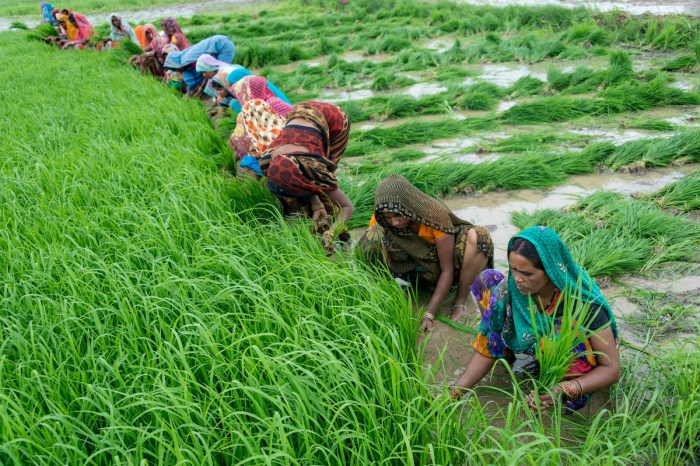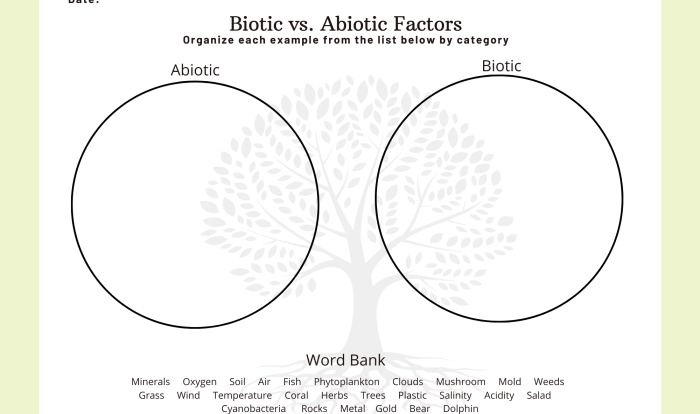What type of population density dependence focuses on abiotic factors? This question delves into the intricate relationship between environmental conditions and the dynamics of populations, exploring how non-living components of an ecosystem shape the abundance and distribution of organisms.
Abiotic factors, such as temperature, precipitation, and resource availability, can profoundly influence population density, acting as limiting factors that constrain growth and survival. Understanding these factors is crucial for effective population management and conservation efforts.
Define Population Density Dependence

Population density dependence refers to the phenomenon where the growth rate of a population is influenced by its own density. In other words, as the population density increases, the growth rate may decline or increase.
Density-dependent factors are those that are affected by the number of individuals in a population. These factors can include food availability, predation, competition for resources, and disease transmission.
Abiotic Factors in Population Density Dependence

Abiotic factors are non-living factors that can influence population density. These factors include temperature, precipitation, soil quality, and availability of water.
Abiotic factors can limit population growth by affecting the survival, reproduction, and dispersal of individuals. For example, extreme temperatures can cause mortality, while a lack of water can limit the distribution of a population.
Examples of Abiotic Factors, What type of population density dependence focuses on abiotic factors
- Temperature:Extreme temperatures can cause mortality, especially in ectothermic organisms (e.g., reptiles, amphibians, insects).
- Precipitation:Availability of water is essential for survival, and fluctuations in precipitation can impact population size (e.g., drought conditions).
- Soil quality:Soil quality affects plant growth, which in turn influences the abundance of herbivores and predators.
- Availability of water:Water availability can limit the distribution of populations, especially in arid environments.
Implications for Population Management

Understanding the influence of abiotic factors on population density is crucial for conservation and management efforts. By manipulating abiotic factors, it is possible to control or enhance population growth.
For example, providing artificial water sources in arid environments can increase the carrying capacity for wildlife populations. Conversely, controlling temperature in agricultural settings can reduce pest populations.
Commonly Asked Questions: What Type Of Population Density Dependence Focuses On Abiotic Factors
What are abiotic factors?
Abiotic factors are non-living components of an ecosystem that influence the survival and distribution of organisms, such as temperature, precipitation, sunlight, soil type, and resource availability.
How do abiotic factors affect population density?
Abiotic factors can limit population growth by reducing survival rates, fecundity, or both. For example, extreme temperatures can increase mortality, while limited water availability can reduce reproductive success.
Why is understanding abiotic factors important for population management?
Understanding abiotic factors is crucial for developing effective population management strategies. By identifying the environmental factors that limit population growth, managers can implement targeted interventions to enhance population viability and prevent declines.

